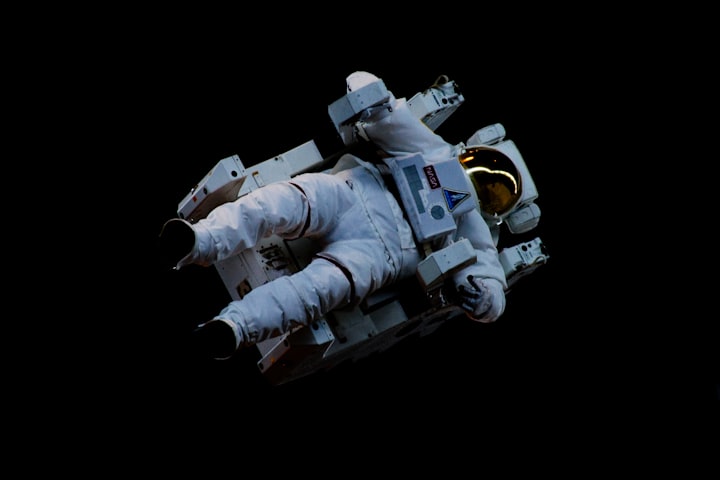2050: A Vision of the Future
Exploring the Possibilities of a World Transformed

The World in 2050 - A New Beginning
In the year 2050, the world will undergo significant changes. Advances in technology and science have led to new ways of living and have transformed the globe in ways that were once unimaginable.
Gone were the days of smog-filled cities and environmental degradation. Governments and individuals have recognized the need to prioritize sustainability, so renewable energy sources are now the norm. The air was clean, the water was pure, and nature had been allowed to thrive again.
Regarding demographics, the world's population had stabilized, thanks partly to initiatives aimed at reducing poverty and improving access to education and healthcare. The gap between the rich and the poor had narrowed, and there was a greater sense of equality and opportunity.
The world's economy has also transformed. The traditional 9-to-5 workday was a thing of the past, as flexible work arrangements and remote jobs had become the norm. This shift gave people more control over their schedules and improved their work-life balance.
Overall, the year 2050 marked a new beginning for humanity. While there were still challenges and problems to be solved, there was a sense of optimism and hope for the future. The world was a better place, and people worked to make it even better for generations.
The Rise of Supercities
By the year 2050, the concept of the traditional city had evolved into something entirely new - the supercity.
These vast metropolises were home to millions of people and were hubs of innovation and progress. They had become self-sustaining ecosystems that provided residents with everything they needed to live, work, and play.
One of the most notable features of supercities was their advanced transportation systems. Personal vehicles had become a thing of the past, as people now relied on a combination of high-speed trains, self-driving cars, and drones to get around. Traffic jams and road accidents were a rarity, as the transportation network had been designed with efficiency and safety in mind.
In terms of architecture, supercities embraced vertical living. Skyscrapers and high-rise buildings dotted the landscape, and green spaces were integrated throughout the city—this conserved land and allowed for more natural light and fresh air.
The rise of supercities has also significantly impacted the global economy. These megacities had become centers of trade and commerce, attracting businesses and entrepreneurs worldwide. As a result, they had become engines of growth and had helped drive the world's economy forward.
Overall, the super cities of 2050 were a testament to humanity's ability to adapt and innovate. They revolutionized how people lived and worked and set the stage for a brighter future.
The Evolution of Transportation
The transportation industry has undergone a radical transformation by the year 2050. Gone were the days of gas-guzzling cars and congested roads. Instead, people relied on a variety of advanced technologies to get around.
One of the most significant changes was the widespread adoption of self-driving vehicles. These autonomous cars were equipped with sensors and AI technology that allowed them to navigate roads safely and efficiently. They were also environmentally friendly, running on renewable energy sources such as electricity and hydrogen.
In addition to self-driving cars, high-speed trains have become a popular transportation mode. These trains were powered by clean energy and could reach speeds up to 500 km/h. They connected cities and even countries, making it possible to travel long distances in hours.
Drones have also become a common sight in the skies. They were used for various purposes, including package delivery, search and rescue operations, and even commuting. Passengers could hail a drone using their smartphones and travel to their destination quickly and safely.
Overall, the transportation industry of 2050 was defined by innovation and sustainability. It changed how people moved around and made travel more accessible and convenient. As a result, the world has become a smaller and more connected place.
The Impact of Climate Change
By the year 2050, the impact of climate change had become all too apparent. Rising sea levels, frequent natural disasters, and unpredictable weather patterns have disrupted communities and economies worldwide.
Governments and organizations had taken steps to address the issue, but the damage had already been done. Coastal cities had been hit hardest, as rising sea levels had flooded streets and homes. Inland areas were also affected, as droughts and heat waves led to water shortages and crop failures.
The effects of climate change were not just limited to the physical world. There was also a psychological toll as people struggled to cope with living in a rapidly changing world.
Mental health issues such as anxiety and depression had become more prevalent, and there was a sense of fear and uncertainty about the future.
Despite the challenges, people had not given up hope. There were efforts underway to mitigate the effects of climate change and to find ways to adapt to the new reality. Renewable energy sources were being developed and implemented on a larger scale, and there was a renewed focus on sustainability.
Overall, climate change will profoundly impact the world in 2050. It highlighted the need for collective action and underscored the importance of caring for the planet.
The Future of Education
The education system of 2050 has undergone a radical transformation. Gone were the days of chalkboards and textbooks, as technology revolutionized the way people learned.
One of the most significant changes was the widespread use of virtual reality (VR) and augmented reality (AR) in the classroom. Students could now learn by immersing themselves in interactive simulations and experiences that brought subjects to life. For example, a history lesson could involve visiting ancient civilizations in VR, while a science lesson could involve studying the human body in AR.
Online learning has also become a popular option, as it allows students to learn at their own pace and from anywhere in the world. Platforms such as Coursera and edX have become go-to destinations for students seeking to expand their knowledge and skills.
In terms of teaching methods, there has been a shift toward personalized learning. Educators used data and AI algorithms to tailor lessons to student's needs and learning styles. This approach resulted in higher engagement and better outcomes.
Overall, the education system of 2050 was focused on adapting to the changing needs of students and the world. It embraced technology and found innovative ways to make learning more engaging and effective.
The Advancements in Medicine
By the year 2050, the field of medicine had undergone significant advancements. New technologies and treatments have emerged that have revolutionized the way diseases are diagnosed and treated.
One of the most significant developments was the widespread use of gene editing. This technology allowed scientists to alter an individual's DNA to repair genetic defects and prevent the onset of certain diseases. It had the potential to cure genetic conditions such as cystic fibrosis and sickle cell anemia and had raised hopes for a future without inherited diseases.
In terms of treatments, personalized medicine has become the norm. Doctors could tailor treatments to each patient's unique needs using a combination of genetics and AI algorithms. This approach resulted in higher success rates and fewer side effects.
Robotic surgery has also become more common, allowing more precise and less invasive procedures. These robots were operated by surgeons remotely and could perform a wide range of tasks, from simple designs to complex surgeries.
The Role of Artificial Intelligence
Artificial intelligence (AI) will become a ubiquitous part of life by 2050. It was used in various applications, from healthcare and transportation to entertainment and retail.
One of the most significant impacts of AI was in the workplace. AI-powered machines were now performing many tasks that humans had once done. This had led to concerns about job displacement, but it had also freed people to focus on more creative and strategic work.
AI has become an invaluable tool for diagnosing and treating diseases in healthcare. It was used to analyze medical images and data and could identify patterns and anomalies that human doctors might have missed. This has improved the accuracy and speed of diagnoses and has helped save lives.
AI has also played a role in the development of new technologies. It was used to analyze data and make predictions about future trends and has helped researchers and engineers make faster and more informed decisions.
The Politics of the Future
Some factors, including technological advancements, economic shifts, and social changes, have shaped the political landscape of 2050.
One of the significant changes was the rise of global governance. As the world has become more interconnected and interdependent, there has been greater recognition of the need for cooperation and coordination at the international level. This led to the establishment global institutions and frameworks, such as the United Nations and the World Trade Organization, designed to address issues transcending national borders.
Another significant development was the emergence of new economic powers. Countries such as China and India had become influential players on the global stage, and their rise had led to a shift in the balance of power. This sparked both cooperation and competition and prompted a reevaluation of traditional alliances.
Social issues have been progressing on topics such as gender and racial equality. However, there were still challenges and tensions over issues such as immigration and cultural identity.
Overall, the politics of 2050 have been shaped by a complex and ever-changing landscape. It had been marked by both cooperation and conflict and had underscored the importance of finding ways to address the challenges of the 21st century.
The Changes in Social Dynamics
By the year 2050, social dynamics had undergone significant changes. Technology advancements and societal values have transformed how people live and interact with one another.
One of the most significant changes was blurring the lines between work and personal life. The widespread adoption of flexible work arrangements and remote jobs has given people more control over their schedules. As a result, the traditional 9-to-5 workday had become a thing of the past, and people had more time to spend with friends and family.
In terms of relationships, there had been a shift towards more fluid and less traditional models. The concept of the nuclear family had evolved, and there was a greater acceptance of alternative family structures. There has also been a rise in the use of dating apps and online platforms, which have made it easier for people to connect with others.
In terms of social norms, there has been a greater acceptance of diversity and inclusivity. People were more accepting of differences in race, gender, and sexuality, and a more significant effort was needed to create a more equal and inclusive society.
The Path Forward - Hope for a Better Tomorrow
As the world looked toward the future, there was hope and optimism about what was to come. While there were still challenges and problems to be solved, there was a belief that humanity was on the right track.
One of the critical areas of focus was sustainability. Governments and organizations worldwide were working to protect the environment and ensure that the planet was livable for future generations. Renewable energy sources were being developed and implemented on a larger scale, and there was a greater emphasis on conserving natural resources.
In terms of social progress, there was a continued focus on issues such as gender and racial equality. There had been significant progress on these fronts, but there was still work to be done to create a more inclusive and just society.
Technology was also playing a role in shaping the future. The advancements in fields such as artificial intelligence and gene editing have raised both opportunities and ethical questions, and there was a need to find ways to harness these technologies for the benefit of humanity.
Overall, the path forward was one of hope and possibility. There was a belief that by working together and embracing change, people could create a better tomorrow for themselves and the world.
About the Creator
Liviu Roman
Mahatma Gandhi — 'Be the change that you wish to see in the world.'
Reader insights
Outstanding
Excellent work. Looking forward to reading more!
Top insights
Expert insights and opinions
Arguments were carefully researched and presented
Easy to read and follow
Well-structured & engaging content
Excellent storytelling
Original narrative & well developed characters
Eye opening
Niche topic & fresh perspectives
Heartfelt and relatable
The story invoked strong personal emotions
Masterful proofreading
Zero grammar & spelling mistakes
Compelling and original writing
Creative use of language & vocab
On-point and relevant
Writing reflected the title & theme






Comments (4)
Great post!
Whoaaa! This blew my mind! Please I hope somehow this fiction will become true. This was really very fantastic! I've hearted and subscribed to you! 💖
Can I go live there now. I need a flying car though, Driving terrifies me. You should sell your blueprint to the government. What sound and great ideas you have, Wow!
This was fantastic. Its been brilliantly written and really well created!